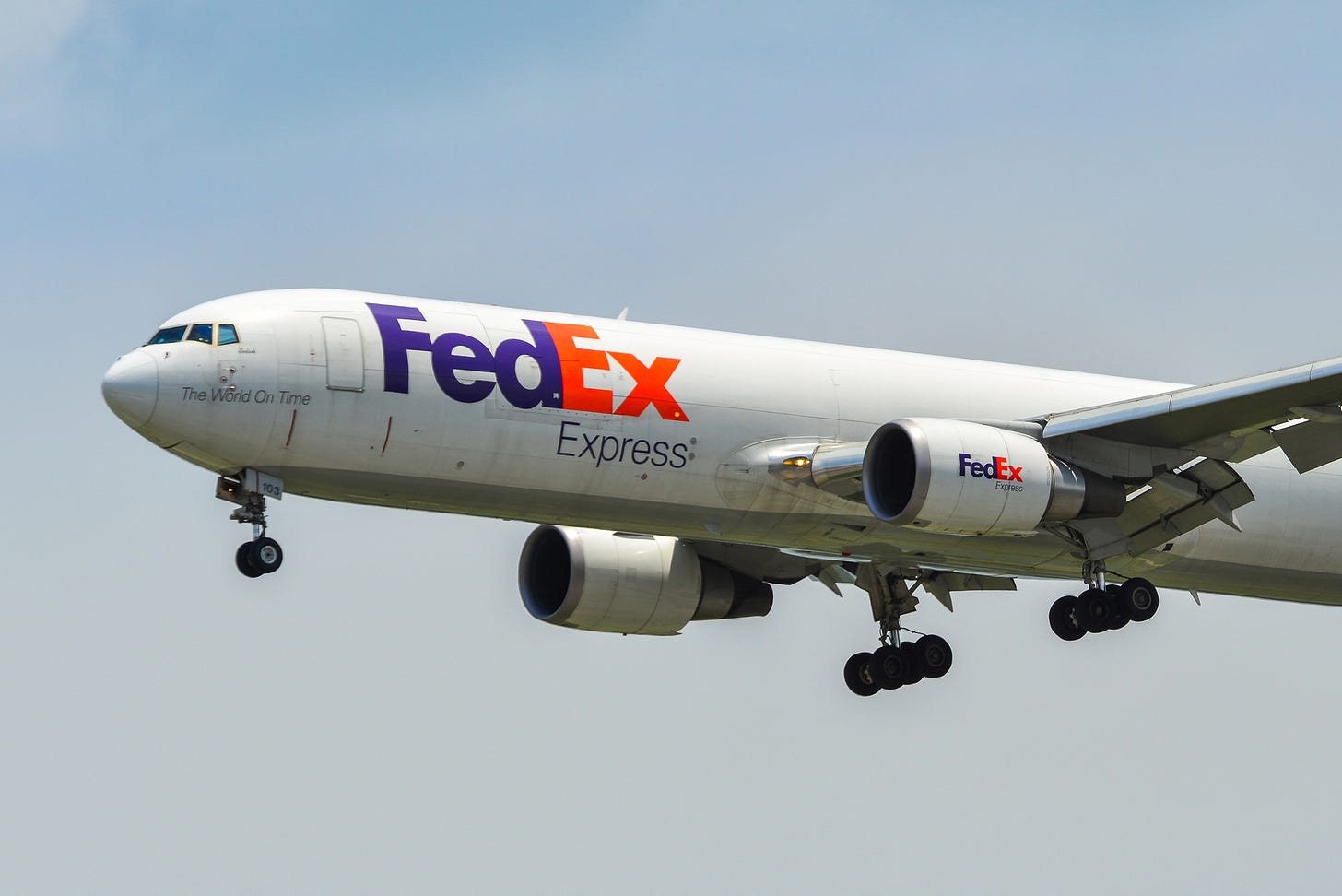FedEx - Chasing Shifting Trade Lanes
A global market defined by tariffs and uncertainty has left express provider FedEx rushing to adapt to lower demand and changes in trade lane patterns, which the China-US route has long dominated. Following the April 2 reciprocal tariff announcement, FedEx observed increased customer uncertainty, resulting in a decline in volumes. Shipment volumes between China and the US, its largest lane by revenue, dropped sharply and remained low throughout the quarter.
UPS is likely to also record a steep drop in volume and revenue on its China and US lanes when it reports its second-quarter earnings in July. Like FedEx, the trade lane from China to the US is UPS' most profitable trade lane. For UPS, it represents 11% of its international division's total revenue. For FedEx, the lane accounts for approximately 2.5% of total revenue.
In response to the declines, FedEx reduced capacity on its Asia-to-Americas lane by over 35%. This reduction included a 50% cut in third-party or "white tail" capacity. Overall, the company executed a net capacity reduction of around 20% for May.
As sourcing demand shifts to Southeast Asia, FedEx launched a direct flight from Singapore to the US. According to FedEx, this route enables more efficient capture of volume from countries such as Vietnam, reflecting a broader strategy of targeting emerging trade flows from Asia to Europe and Latin America. Asia to Latin America, for example, is showing robust growth.
Indeed, FedEx's Chief Customer Officer, Brie Carere, noted that the company has observed a trend toward regionalized and diversified supply chains since the pandemic. "I think there has been that impetus to diversify, and I think that there's going to be a continuation," said Carere during the company's earnings call.
To help identify shifts and capacity needs, FedEx developed a "digital twin" of global trade routes, leveraging years of data on commodities, countries, and supply chain behavior. This capability enables FedEx to leverage technology in complex trade scenarios, offering platform-based solutions and recommendations to shippers.
FedEx is also investing in emerging markets, such as India, where profitable growth is already being realized despite a relatively small revenue base.
DHL is also focusing on emerging markets. "We have a higher market share in those fast-growing geographies, and that's where we will continue to focus with our geographic tailwind program, where we highlight several countries that have both strong GDP growth, but also strong trade growth, and we aim to solidify and grow our position, especially in those markets," DHL Group chief executive Tobias Meyer told analysts in March.
Furthermore, FedEx's commercial teams are closely aligned across regions. For example, when a sales call in China reveals a customer diversifying its sourcing strategy, that information is quickly shared with counterparts in Mexico, Vietnam, or Malaysia. This bottom-up communication enables FedEx to proactively respond to shifts in customer behavior, thereby maintaining service quality and helping clients navigate uncertainty.
Despite the capacity changes, FedEx reported flat international export revenue and a 2.7% increase in the average daily volume of total international exports for the fourth quarter. However, FedEx anticipates $170 million in headwinds due to global trade policy impacts, particularly on the transpacific trade lane for its first quarter.
For more thoughts and shares, be sure to follow me on Twitter, BlueSky and LinkedIn.
I wear a number of hats these days. I’m also helping out the Reverse Logistics Association as a research manager, and at JOC, I help out as a research analyst and write a weekly LinkedIn newsletter, Freight Forward, summarizing JOC & other published articles and providing an outlook for the week ahead. In addition, be sure to check out my website and be sure to sign up to receive more blog posts.




